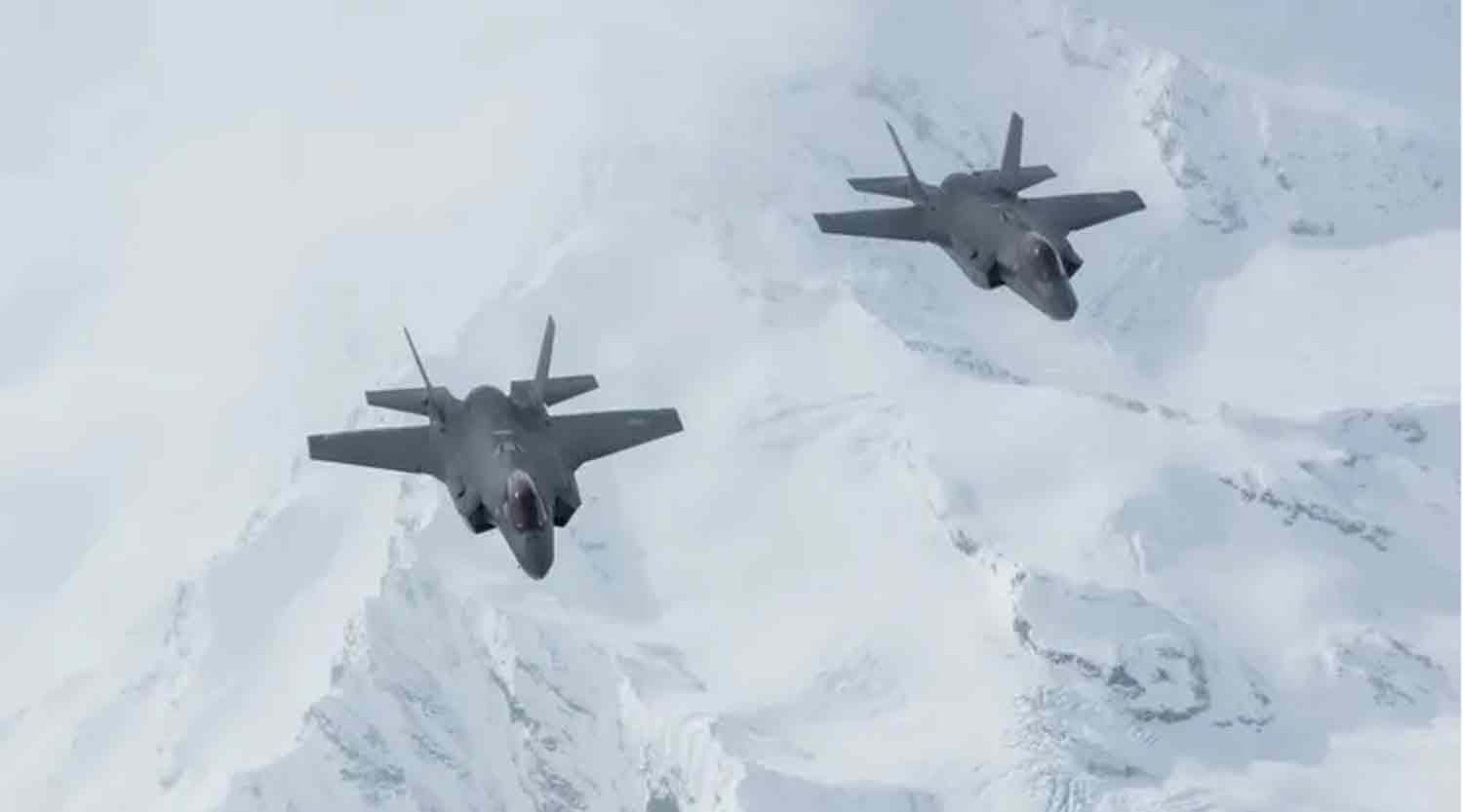Pakistan is reportedly poised to acquire the J-35 fifth-generation stealth aircraft from China. This acquisition would once again place Pakistan ahead of India in the ongoing competition for advanced combat aircraft, a trend that has been evident since the mid-1950s when both nations began to develop their air forces.
In 1953, India secured the Dassault Ouragans (Toofani), prompting Pakistan to swiftly respond by obtaining 102 superior F-86F “Sabre” aircraft from the United States.
A few years later, the Indian Air Force (IAF) added the Dassault Mystère IV to its fleet in 1957. By 1961, Pakistan, a significant non-NATO ally of the United States, received F-104 Starfighters through the Mutual Assistance Program.
In response to Pakistan’s advancements, India sought to bridge the capability gap by acquiring the Soviet MiG-21, which became operational in 1964.
Fast forward to 1981, the United States approved the sale of F-16s to Pakistan as part of an aid initiative. In turn, India recognized the need to modernize its combat fleet and placed an order for the French Dassault Mirage-2000 in 1982.
India then took an additional step by ordering the Soviet MiG-29, becoming the first international buyer of this aircraft outside the Warsaw Pact nations.
The trajectory of military aviation in the 21st century is unlikely to shift significantly. In 2010, the Pakistan Air Force (PAF) welcomed its first squadron of the JF-17 fighter jet, a product of collaboration with China. In comparison, India took an additional six years to introduce a similar aircraft, the indigenous LCA Tejas-Mk1, which entered service with the Indian Air Force (IAF) in 2016.
Moreover, Pakistan has commenced the induction of the latest JF-17 variant, known as the ‘JF-17 Block III’, into its fleet as of 2023, while India continues to face delays in the production and delivery of the Tejas-Mk1A.
Historically, Pakistan, under military leadership, has proactively enhanced its Air Force capabilities. The reported interest in acquiring the Chinese J-35 fifth-generation stealth fighter reflects Islamabad’s strategy to maintain an edge over New Delhi in the competitive landscape of combat aircraft.
Regarding the J-35 acquisition, if Pakistan proceeds with the purchase, it would represent the first instance of China exporting its fifth-generation fighter to an ally. There are unconfirmed reports suggesting that the PAF has approved the acquisition of 40 units, expected to be delivered within a two-year timeframe.
The J-35 was recently showcased at the Zhuhai Air Show, revealing a design reminiscent of the US F-35 Lightning II. This stealth aircraft is anticipated to be available in two variants—one tailored for the Air Force and another for naval operations.
Air Chief Marshal Zaheer Ahmed Baber Sidhu, the leader of Pakistan’s Air Force, announced in January 2024 that the groundwork for the acquisition of the J-31 stealth fighter aircraft has been established, with plans for it to be integrated into the PAF’s fleet “in the near future.” The J-35 is anticipated to be a more advanced and “production-ready” version of the earlier FC-31 model.
In an article for EurAsian Times, Squadron Leader Vijainder K. Thakur (retd), an Indian Air Force veteran and military analyst, noted that the J-35 surpasses the FC-31 or J-31 with its more powerful WS-19 engines, enhanced radar systems, superior sensor fusion, improved aerodynamics, stealth capabilities, and a broader array of weaponry, among other advanced features.
The J-35 is classified as a medium-sized fighter with a tailplane wing design and surface-attack capabilities. Its acquisition by the Pakistani Air Force would significantly enhance its operational capabilities. Alongside the F-16 and J-10C, the J-35’s land-attack variant would provide Pakistan with a strategic advantage over India.
In contrast, India is still in the early stages of developing a fifth-generation stealth aircraft. The AMCA, India’s fifth-generation project, is not expected to be operational before 2034.
Additionally, the options for procuring a stealth aircraft are quite limited. Presently, only three nations— the United States, Russia, and China— possess operational fifth-generation fighters. Given the competitive dynamics with China, the J-35 is not a viable option for India, leaving the Russian Su-57 Felon and the American F-35 Lightning II as the only feasible fifth-generation alternatives.
The United States has not yet made a clear commitment to selling the F-35 to India, largely due to India’s reliance on various Russian military systems, including the S-400 air defense system. Additionally, India has not expressed significant interest in acquiring the F-35, as the Indian Air Force has generally been hesitant to purchase American-made fighter jets.
While some Indian military veterans advocate for reconsidering the Su-57, New Delhi has not demonstrated a strong inclination to procure these Russian stealth fighters, likely due to issues such as limited production capacity, ongoing delays, and apprehensions regarding technology transfer.
The Pakistan Air Force is actively modernizing its fleet. Alongside its established 4th-generation F-16s, the PAF has acquired the 4.5th-generation J-10CE from China, which is intended to counter India’s Rafale jets. If Pakistan successfully receives the J-35 within the next two years, it could significantly enhance its air power relative to India.
Squadron Leader Vijainder K. Thakur notes that by 2030, the PAF may operate two squadrons of J-35A, totaling around 40 aircraft. In the same timeframe, the People’s Liberation Army Air Force, currently estimated to have about 200 J-20 fighters, could potentially double that number. In stark contrast, the Indian Air Force is projected to have no stealth fighters in its arsenal by 2030.
Advanced stealth aircraft present significant challenges for air defense systems, making them capable of executing first strikes with greater efficacy. While specific information regarding the J-35 is still largely classified, Chinese analysts assert that it is the “most stealthy” aircraft globally.
The comparison between India’s “combat proven” Rafale and Su-30 fighters and the “untested” J-35 will be an interesting development to observe.
Discover more from Defence Talks | Defense News Hub, Military Updates, Security Insights
Subscribe to get the latest posts sent to your email.





